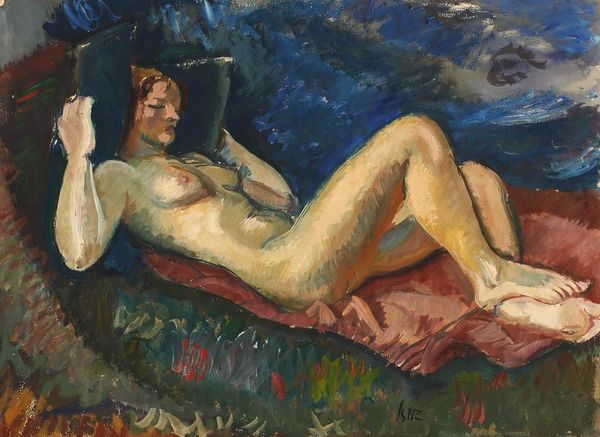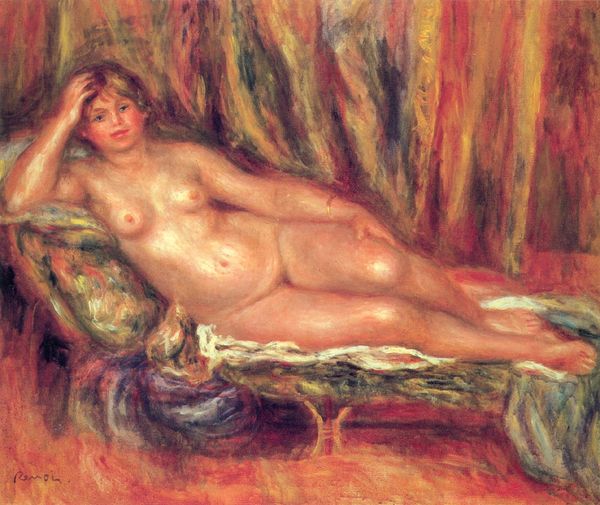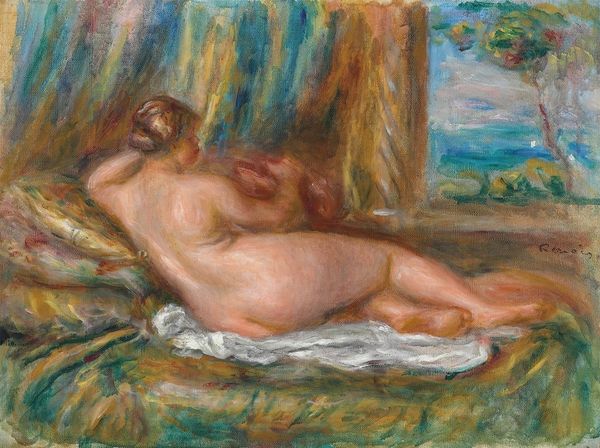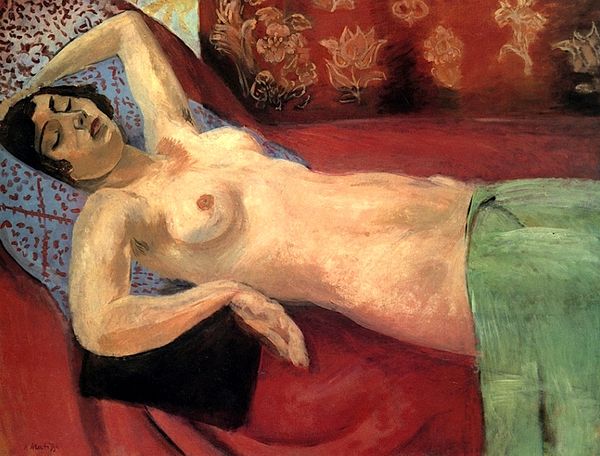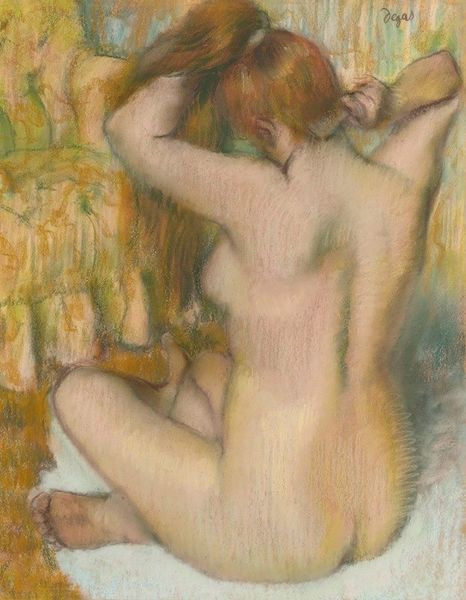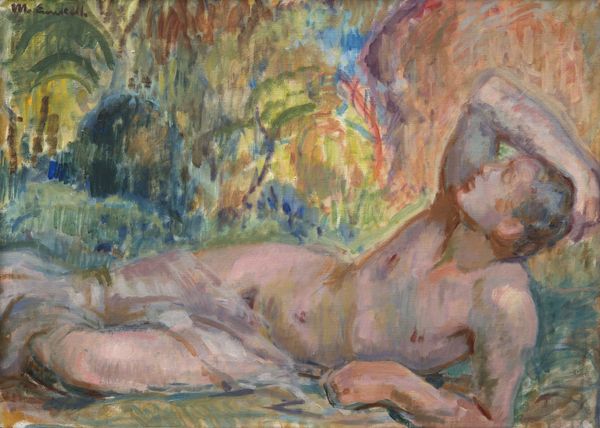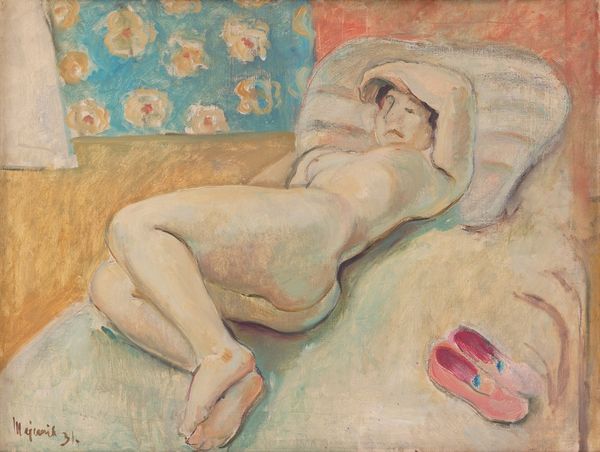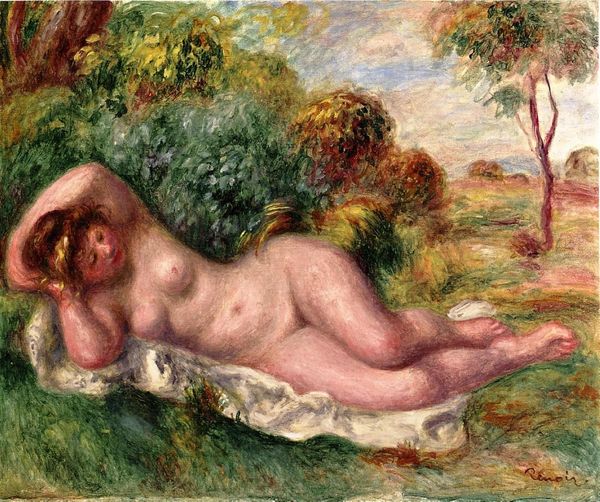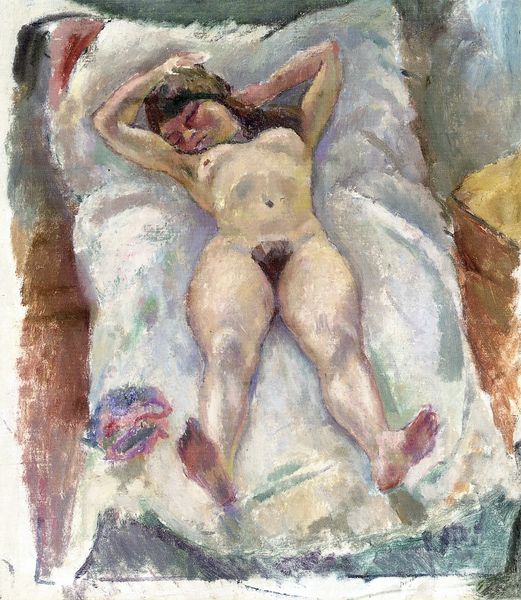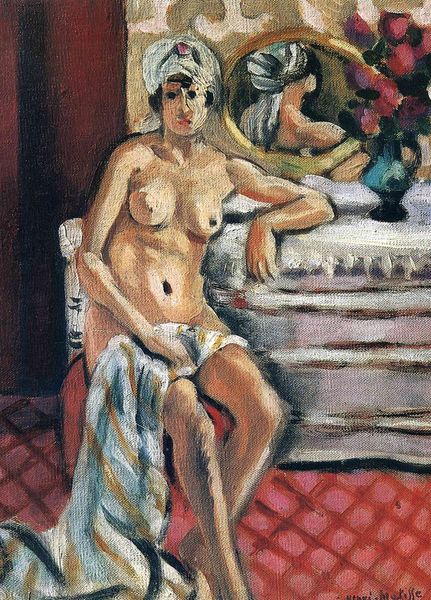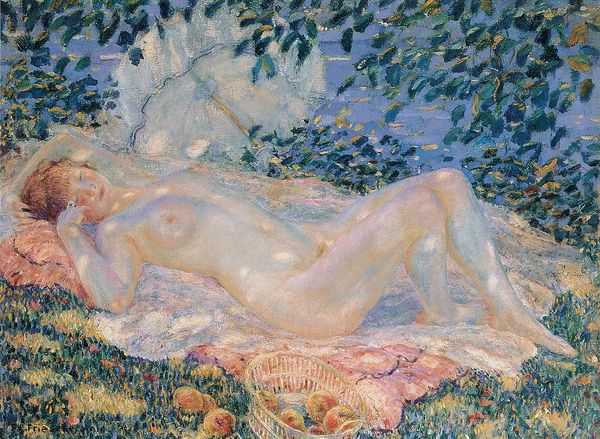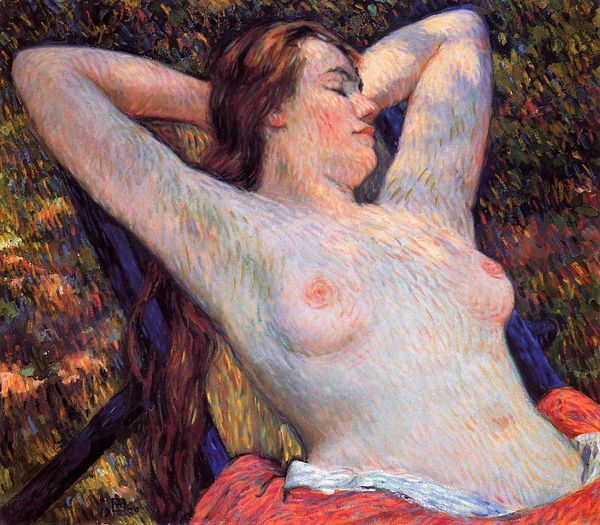
painting, oil-paint
#
portrait
#
painting
#
oil-paint
#
landscape
#
oil painting
#
nude
#
surrealism
Dimensions: 60 x 80 cm
Copyright: Rene Magritte,Fair Use
Curator: The vibrant colors strike me immediately. It has an unsettling, almost dreamlike quality to it. Editor: We're looking at René Magritte's "The Harvest" from 1943. It's currently held at the Royal Museums of Fine Arts in Belgium, Brussels. An oil painting with that immediately recognizable surrealist style. Curator: Yes, that unsettling effect comes directly from Magritte's deliberate compositional and color choices. Look at how the figure is sectioned into discrete regions of bright, bold, and separate coloration that denies us from seeing it as a seamless organic being. This is heightened further by the body's unusual pose that contorts it uncomfortably. It suggests themes of alienation and fragmentation that were deeply important in post-war thinking about the human condition. Editor: While I see that the distinct blocks of colour disrupt our usual understanding of form, aren't you also drawn in by how seamlessly Magritte creates texture through color, line, and detail? Consider how the strokes, dabs and scumbles give dynamism and variation. Even in this odd configuration of planes there is something quite captivating at play. The tension draws your eye over the details to find relationships you can only ever hypothesize. Curator: Precisely! And in terms of broader context, consider how this depiction of the nude can also challenge traditional patriarchal power structures through its unconventional and deliberately bizarre representation of a female body that can not be easily enjoyed or consumed through the “male gaze.” It asks us, perhaps, to consider what the “harvest” really is that is on offer: is this some form of surrealist labor struggle where art has more in common with the grotesque rather than the beautiful? Editor: It certainly forces us to abandon comfortable narratives. Perhaps that push is Magritte's ultimate goal. He uses paint to ask questions rather than offer any pat answers. Curator: A perfect articulation. Editor: Indeed. This painting's disquieting allure stems, then, from this very duality.
Comments
No comments
Be the first to comment and join the conversation on the ultimate creative platform.
